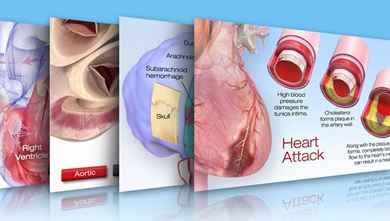Transesophageal Echocardiography
Quick Facts
- Transesophageal echocardiography is a scan that makes pictures of your heart.
- It’s used to find problems in your heart’s structure and function.
What is transesophageal echocardiography?
Transesophageal echocardiography (TEE) is a test that makes pictures of your heart. TEE uses sound waves (ultrasound) to make detailed pictures of your heart and the arteries that lead to and from it. The echo transducer that produces the sound waves for TEE is attached to a thin tube that passes through your mouth, down your throat and into your esophagus. The esophagus is close to the upper chambers of the heart, so very clear images of those heart structures and valves can be made.
Why do people need TEE?
Health care professionals use TEE to find problems in your heart’s structure and function. TEE can give clearer pictures than standard echocardiograms of the:
- Large artery leaving the heart (ascending aorta)
- Upper chambers of the heart
- Valves between the upper and lower chambers of the heart, including artificial valves
- Possible small abnormal structures
- Small opening between the two upper chambers of the heart
The detailed pictures provided by TEE can help your health care team see:
- The size of your heart and thickness of its walls
- How well your heart is pumping
- If there is abnormal tissue around your heart valves that could be bacterial, viral or fungal infections or cancer
- Defects that can cause heart murmurs
- If blood is leaking backward through your heart valves (regurgitation) or if your valves are stiff, narrowed or blocked (stenosis)
- If blood clots are in the chambers of your heart, such as those caused by atrial fibrillation
TEE is often used for information during surgery to repair heart valves, a tear in the aorta or congenital heart lesions. It’s also used during surgical treatment for endocarditis, a bacterial infection of the heart's inner lining and valves.
What are the risks of TEE?
The few risks of TEE involve passing the probe from your mouth to your throat and esophagus. You will get medications before the test to make you calm and numb your throat. But you may still feel like gagging.
- You may have a sore throat for a day or two after the test.
- In less common cases, people who have a TEE may have an allergic reaction to the medications or they may have minor bleeding in their esophagus.
- There is also a risk of chest infection caused by inhaling something other than air into your lungs.
How do I prepare for TEE?
Check with your health care professional. You may be told:
- Not to have alcoholic drinks for a few days before the test
- Not to eat or drink anything for a certain amount of time before the test
Since you may be given a sedative to help you stay calm, someone should drive you home after the test.
What happens during TEE?
A heart doctor will guide the scope into the esophagus and stomach.
- The doctor sprays your throat with a medication to numb it and control the gag reflex. You’ll lie on a table.
- A nurse puts an IV in your arm and gives you medication to help you stay calm.
- The technician places small pads (electrodes) on your chest. The electrodes are attached by wires to a machine that will record your electrocardiogram to track your heartbeat.
- Your blood pressure will be monitored with a blood pressure cuff on your arm.
- Your oxygen level will be watched with a pulse oximeter on your finger.
- A tube may be passed into your nose to provide oxygen.
- A thin, flexible tube (probe) is gently guided through your mouth and down your throat. You’ll need to swallow as it goes down.
- A transducer on the end of the probe sends sound waves to your heart and collects the echoes that bounce back. These echoes become pictures that show up on a video screen.
- When the TEE is done, the probe, IV and electrodes are removed. You will be monitored until you are fully awake. Then, you can usually get up, get dressed and be taken home from the clinic or hospital.
What happens after TEE?
Your throat may be numb for a short time. Don’t eat or drink anything until the numb feeling goes away — you could choke.
- You may have trouble swallowing right after the test. This will go away within a few hours.
- It’s common to have a sore throat for a day or two after the test.
- Because you get a sedative during the procedure, someone should drive you home from the test. You should be able to drive in 24 hours.
What should I watch for?
Call your health care professional if your sore throat gets worse or doesn’t go away after a few days.






